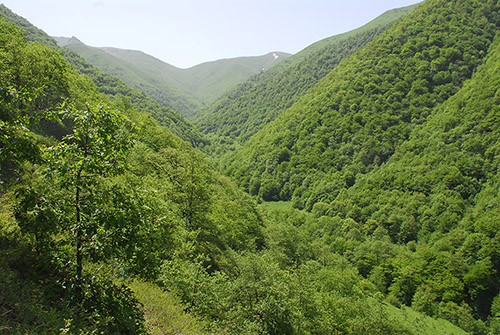
AWHHE work related to forest conservation
In 2018, Armenian Women for Health and Healthy Environment (AWHHE) conducted a project, “Support of the development of Green Climate Fund project and capacity building development in Armenia”
The project Support of the development of Green Climate Fund project and capacity building development in Armenia (https://awhhe.am/2018-support-of-the-development-of-green-climate-fund-project-and-capacity-building-development-in-armenia/) was implemented with financial support from The Food and Agriculture Organization of the United Nations (FAO) under the FAO YUNGA programme. In frame of the project, AWHHE gathered baseline household data and data about the development and distribution of environmental education resources.
Project Outcomes:
(1) rural household survey was conducted, which established baselines of energy use and type (wood, gas, etc.) at different times of the year and determined the main drivers of forest and other natural resource degradation focusing on women as actor of change of natural resource management;
(2) electronic versions of the YUNGA resource materials were prepared in Armenian language (challenge badges on climate change, nutrition and forestry) for distribution and use in Armenia environmental education network.
Brief summary of the household survey
In 2018, Armenian Women for Health and Healthy Environment (AWHHE) conducted a household survey as part of activities for the provision of “Support for the development of Green Climate Fund” project and capacity building development in Armenia”.
The household survey contributed to the FAO Strategic Objective 2 – Make agriculture, forestry and fisheries more productive and sustainable; organizational outcome 2.2 countries developed or improved policies and governance mechanisms to address sustainable production, climate change and environmental degradation in agriculture, fisheries and forestry; output 2.2.1 policies, strategies and investment programmes formulate, in support to sustainable agriculture, forestry and fishery, and address climate change and environmental degradation. The survey was conducted under FAO UNGA Programme and contributed to FAO support to the Government of Armenia in developing its Green Climate Fund capacities and project portfolio for achieving its commitments under its (intended) nationally determined contribution (I)NDC under the UNFCCC Paris Agreement.
AWHHE used a household survey template provided by FAO to undertake household survey, the work was based on the agreed criteria. The provinces (marzes) and villages where the household surveys was undertaken were determined in coordination FAO and Hyantar. The survey was conducted in 28 villages in three Armenia’s marzes: Tavush, Lori and Syunik.The work also ensured the engagement with local communities (the administration/ mayors of the villages). The criteria of selection of individuals to be interviewed were determined based on village, household structure as well as location of the villages compared to forested areas. The compiled numeric data was provided in one excel sheet to allow easy elaboration of the data and the non-numeric responses (worded replies) are provided in a word document. The information is also provided in a gender disaggregated form.
Key findings/ AWHHE observations
During the survey, AWHHE made observations regarding the key barriers and enabling factors which could be created in developing an overview/vision and roadmap of women’s engagement in forest management. One of key observations reflected a more active social role of women in rural Armenia. The biggest challenge seemed to be the lack of awareness about the forest and pasture management, particularly among women. The public participation in particular women in related decision-making was therefore low.
Women seemed to be more active in decision-making in the following circumstances: (a) when women have to assume responsibility as head of the household, e.g. in the households where men are away from home for considerable time period due to outmigration, as well as where women are widowed or divorced; (b) when women in the families are employed or are engaged in public activities, that is are more indepenent; (c) when there is a participatory setting in the culture of decision-making in an individual family.
In families where women are not employed (housewives) and where the traditional role of men as decision-makers is predominant, the female respondents were passive in their answers and they did not express willingness to participate in management processes; generally these women are less informed. Howerver, given the fact that women are more often responsible for household cores (cooking, washing, etc.) and creating general family comfort environment, there seems to be an enabling factor when it comes to engaging women in decisions related to the use of natural resources, forest conservation and climate change.
The survey results, as well as the observations of the survey interviewers showed that wood is the most widely used fuel for heating.Generally, gas is used more than wood for cooking. The rest of respondents use wood, liquid gas and electricity. The use of gas, electricity and liquid gas during the cold season is reduced due to wood consumption. The women prefer using gas for cooking, as it is easier, faster and more comfortable. This is also seen in those villages which are not gasified. In these villages during hot season, the people prefer liquid gas to wood. During the cold season, some respondents of the villages both gasified and without gasification use wood in order to save money as gas compared to wood is more expensive.